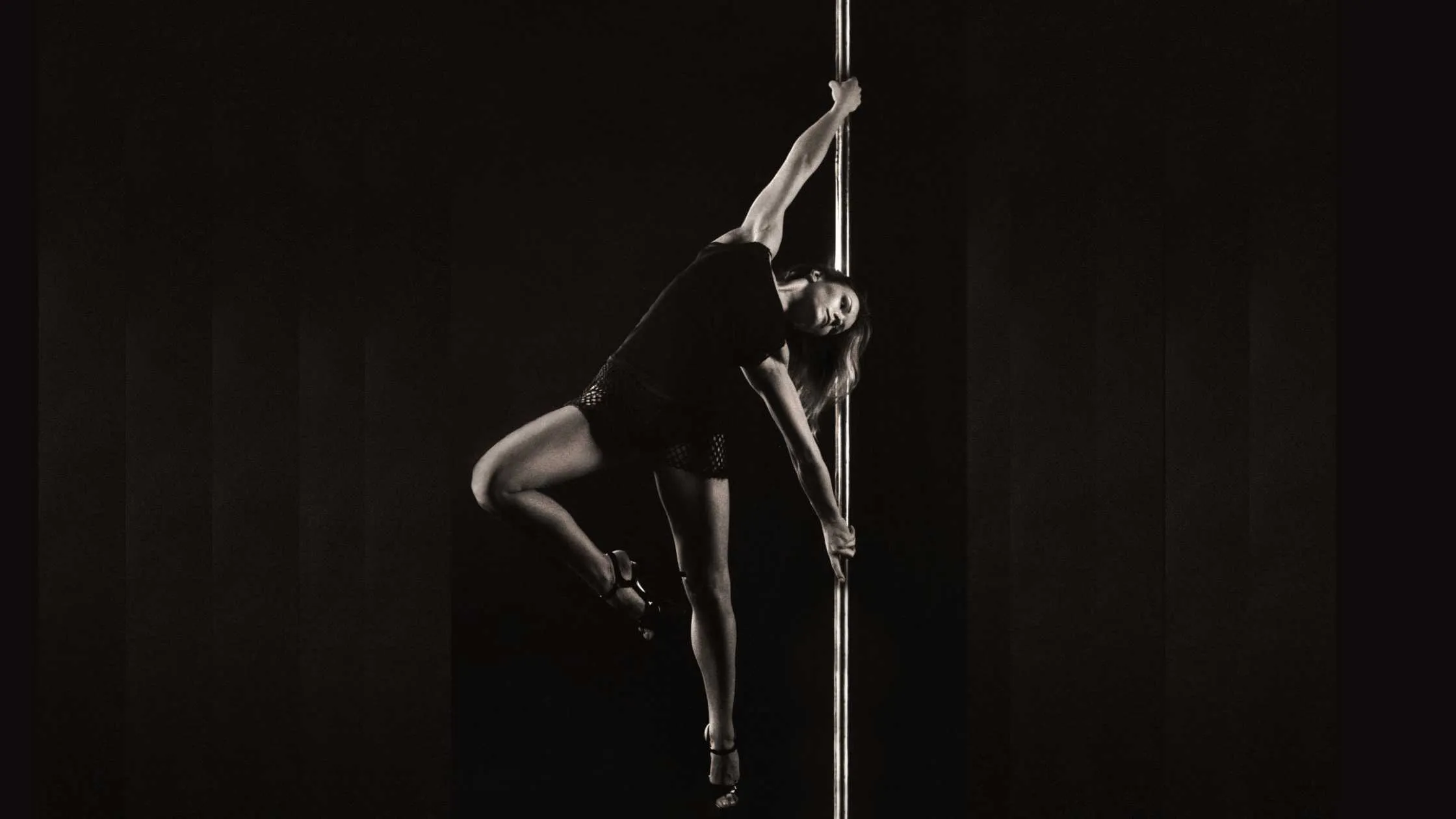Las Vegas is known for its exotic dancers, commonly referred to as strippers. In many ways, strippers are just like the rest of us, except that they are completely different from the rest of us.
Oh, those amazing Las Vegas Strippers! For better or worse, stereotypes about the profession make strippers a fascinating topic. But while there is some truth to some of the stereotypes, many of them are untrue. For starters, not all strippers are women who are forced into the profession or “pay for college.”
However, the college story has some elements of truth. One in three strippers goes to college and dances to support their education. So, let’s dispel the myths about this 9,000-year-old profession and look at some weird facts about strippers.
#1. Vegas Strippers pay to skip the stage
It’s pretty well known that strippers are independent contractors. They pay to play, meaning they pay the strip club for the opportunity to work the dance floor on a particular night.
Here’s what we didn’t know. Dancers can pay an extra fee, so they don’t have to dance on the club’s stage. While appearing on stage can be a good marketing tool for these young women, it’s nowhere near as lucrative as private dancing or private rooms, so it’s often worth spending the money to avoid being taken away from a potentially lucrative client.
#2. The power of ovulation
It sounds a little strange, but Vegas Strippers make more money when they are ovulating. No kidding.
We had to investigate this rumor, and there’s actually scientific evidence that it’s true. According to a University of New Mexico study, dancers earn an average of $30 more per hour when they are ovulating. Women on birth control pills who don’t ovulate earn significantly less.
How much do strippers earn, you ask? Well, we were curious about that, too. We asked a dancer at the Hustler Club, and she said: “I was making about $175,000 a year, but things have slowed down a little bit. Even when things are slow, Las Vegas strippers are doing very well.
#3. Shoes, watches, manicures
Vegas Strippers have a very keen sense of which clients will bring a good return on their investment. When a dancer looks around the customer’s room, she has a few things they look for to determine if a man has money. The top three include a man’s shoes, watch, and nails. (If he’s had a manicure recently, he’s probably pretty well-off.)
Ultimately, wealth doesn’t always mean a dancer makes more money for that client. Men of more modest means can often be the most rewarding.
Not surprisingly, dancers often look at how much cash is in a man’s wallet when he opens it to buy a drink or tip a dancer. Most of them won’t go to an ATM, so their investment will likely be limited to the cash he has on them.
Oh, another interesting insight into the world of tip-seeking. Dancers seem to agree that overweight men are often the best tippers. No one really knows why.
#4. Competition at the pole
While dancers make good money by lap dancing and socializing in private rooms (one dancer at the Hustler Club, Princess, recently had a $30,000 private session), many increase their income through pole dancing competitions.
It turns out there is a whole cottage industry around pole dancing and competitions, with prizes often running into the thousands of dollars. The bonus, at least for the performers, is that these competitions also require no nudity.
#5. One foot on the floor
This is one of the strangest rules we’ve heard of in strip clubs, but in some clubs, a dancer must stand with at least one foot on the ground during private dances.
Although we couldn’t get the club’s security staff to say so, we suspect the rule is meant to prevent excessive fascination with dancers by opening the club to legal issues involving prostitution or obscenity.
#6. The demand for male Vegas Strippers is surprisingly low
With shows like “Magic Mike” shedding light on the world of male stripping, more and more men are entering the scene. Nevertheless, it is unusual how low the demand for them remains. In the United States, only 8 percent of strippers are men, compared to 92 percent of women.
That’s a ratio of nine female strippers for every man. No wonder why people usually assume that strippers are women. However, this percentage does not account for strippers at private parties. You know, a bachelorette party surprises the attendees. Thus, it’s possible that women simply prefer to hire male strippers in private rather than attend a club. Also, can we call Channing Tatum? Is that possible? Oh, wait… I think it was just a movie.
#7. Stripping could be a long-term career
It’s easy to assume that stripping is only for young people or a temporary, unpromising job. However, some dancers have succeeded in making dancing a successful career. They approach stripping with an entrepreneurial mindset, build a loyal fan base, and open pole dancing courses. Over time, they may even make a passive income from the course. Many people enjoy pole dancing as a workout, even if they don’t plan on stripping.
Las Vegas Strippers have also benefited from the money and skills they have acquired to start a new career in the entertainment industry. Rapper Cardi-B was a stripper to help pay her bills, pay her rent and invest in her creative goals. Her dancing is still seen in her music videos. Singer and songwriter Courtney Love said she used the money she made from dancing to start her band Hole. (Funny name for a band of former strippers.)
Finally, you don’t have to quit stripping at age 30. The average age of strippers can be anywhere from 23 to 24, but 6% of strippers have been dancing for 20 years or more. To do it in the long run, you need to keep yourself fit, in shape, and in a positive attitude. For example, Makeda Smith started stripping just a few years ago. She turned 55 in 2017 and gained popularity after her Worldstar video went viral. You’d be surprised how many women over the age of 40, 50, and 60 are dancing at the pole today.
The club in Atlanta is for older strippers between the ages of 45 and 60. In case you’re wondering, the place is called the Clermont Lounge.
#8. Role-playing and dancing can go hand in hand
While dancing may be their main skill, some luxury clubs also expect strippers to dress up and play roles. Several quirky but popular striptease hotspots in the U.S. include unique role-playing themes. Portland has the Pirate Bay, where the outside is shaped like a big jug of rum. The club’s dancers cater to all pirate lovers. If you really love Halloween, there’s a Silver Dollar strip club in Eugene, Oregon. During the festivities, you can explore the spooky rooms while costumed strippers scare the crap out of you.
Wait, don’t strippers take their clothes off? And we can’t forget the schoolhouse in Neoga, Illinois. This high school strip club has a multiplication table and a copy of the local pioneer school charter hanging on the walls next to the stripper poles. Or maybe lightsabers and love is more your “thing.” In that case, there’s a cantina in Los Angeles called Mos Eisley that hosts Star Wars Night. The strippers there dress like well-known characters, such as stormtroopers. You’re looking for one of these droids.
#9. Female Las Vegas Strippers can handle anything…
I mean their period. If you get it, you’ll understand why it’s so important. Cramps, bloating, acne, ugh. It sucks. But since most strippers only dance, there’s a simple solution for those who feel good enough to deal with it. A well-hidden tampon and a severed shoelace will do the trick. Then they’ll drink the Midol and get to work. Believe it or not, they really can make a lot more money this time of the month. Why? Because studies show that many women have an increased libido during their periods.
#10. To succeed, you must have the proper attitude
Most Las Vegas Strippers don’t dance against their will. They do it because they enjoy dancing and are confident in their bodies. It takes talent and a certain level of commitment to skill to be a good dancer. Most strippers like the playfulness and self-esteem boost that comes with pole dancing. By exuding confidence and pleasure, they are more likely to attract clients and make more money.
Thick skin is another requirement for being a stripper. Although the profession is more popular today, some people still hold stereotypes and look down on anyone who decides to strip. Dancers can’t let it affect them. At work, clients regularly turn them down because not everyone is attracted to their appearance or style of dancing. Strippers who are successful don’t take it personally.
#11. Vegas Strippers are healthy and work in clean conditions
This fact made the odd list because of the widespread stereotype that strip clubs are dirty places that promote drugs and spread STDs. The truth is that most strippers are healthy, have health care, and maintain their physiques so they can pole dance. Strippers often work out at the gym and eat clean to keep their bodies toned. The survey also showed that about 90 percent of strippers have a religious background and are close to their parents.
They do not rebel against their parents or run away from religion. Regarding strip clubs, the majority of owners operate law-abiding businesses. They follow health codes, have liquor licenses, and prohibit all drugs on the premises. You can even get a good meal at clubs like the Venetian Gentlemen’s Club in Orange County, California, which is also home to Sushi Dave’s. You can look down on the second floor to the main stage and enjoy quality sushi at the same time. Two birds. One stone.
#12. Vegas Strippers have a wide range of potential earnings
You may have heard that strippers in Vegas make more money in one night than the average person makes in a week. While this may be true, it is not. A stripper’s salary can vary depending on the hours she works, the day she works, and the turnout of clients on a particular shift.
Salary can also depend on the quality of the club, the city in which you dance, and the type of clients you meet. Each place offers different opportunities. In the U.S., the average salary for strippers can range from $19,000 to $140,000 a year. In an interview with Ellen DeGeneres, Cardi B. said she started dancing in a strip club at age 19 and saved about $20,000 by the time she was 20.
However, strippers can only make a few dollars a night for those who start out and only dance at slow times. A stripper’s earnings can also depend on the season, especially if you are dancing at private parties. In the summer, there are usually more parties than parties. From November to March, strippers dancing at private parties can potentially be out of work. Some strippers go to Las Vegas for weekends to make more money at high-end clubs. It is important to save money and plan ahead for seasonal earnings in case you plan to pursue this profession.
#13. Strippers existed thousands of years ago
The striptease is not the result of the de-evolution of human morality or the destruction of humanity. It was used in rituals and religion, and so were brothels. In Bulgaria and Romania, archaeologists found statuettes of strippers more than 9,000 years old. Most ancient religions also had sexual deities stripped for various reasons. For example, the ancient Greeks had dancers undress for fertility in their temples.
The dancers slowly removed the animal skins in which they were adorned. These dancers later became priestesses and viewed the services they provided as an honor. The ancient Greeks, unrelated to religion, also had brothels in which women danced naked to excite visitors. Thus we can at least conclude that the first versions of strippers date back to the 6th century B.C. In addition, strippers were used in the Sumerian people’s worship of the Underworld deity Inanna.
Women took off their clothes one by one to imitate the trials of the goddess. Ancient Rome also had strippers who considered themselves actresses because they usually stripped as part of the performance. They used eroticism to keep them interested. These instances demonstrate that dancing was not always a debased activity, even though there are other reports of strippers connected to the slave culture. Thousands of years ago, communities viewed strippers as religious symbols or professionals.
#14. Las Vegas Strippers are asked to do crazy things besides dancing
While it may not be surprising that strange things can happen in a strip club, some of the crazy customer requests certainly are. Sometimes strippers are asked to do much more than just take their clothes off, but it’s not what you think. One dancer claimed that a man paid a lot of money to let him smell her ass. She just had to bend over and let him take a quick breath. Disgusting. And some of these awesome favors aren’t really that sexy.
Another stripper had a regular customer who ignored the private dances and wanted to look for lint between his toes. He kept paying for songs until he was done looking. She once got a $100 tip after putting some lint between his toes for him to find. It’s like a treasure trove of toenails.
#15. Strippers are union activists
Dancers have filed class action lawsuits against a number of chain clubs, asserting their rights as employees. The clubs control every aspect of their work, from what they wear when they work to how they talk to customers, so under federal labor law, strippers should be treated as employees, not independent contractors, and therefore entitled to minimum wage, unemployment insurance, etc. However, many dancers are opposed to this idea, fearing that the clubs will continue to exploit them and that they will lose their earning power.
#16. Most Las Vegas Strippers suddenly find day jobs
Most people see stripping as a way to show their passion through dance. Today, the space has become more open, and people have come to see it more as a lifestyle. About 60 percent of female strippers dance as a part-time job and have a few unexpected part-time jobs. Given the salaries some teachers make, it’s perhaps not surprising to learn that 14% of strippers work as teachers during the day.
Other jobs include analysts and mathematicians. As mentioned earlier, Makeda Smith danced in her 50s and has continued to dance along with a high-profile career in the entertainment industry. She has her own P.R. agency and has been a P.R. for artists such as Mo’Nick and Jamie Foxx.





